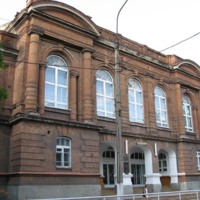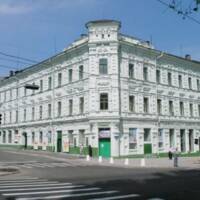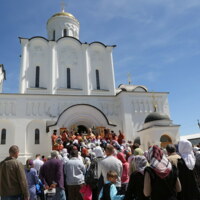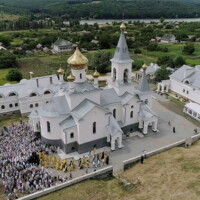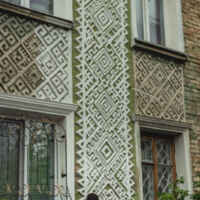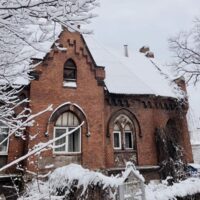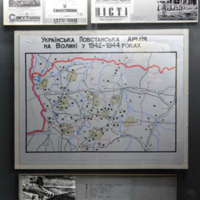Browse Items (229 total)
-
Корпус індустріального технікуму
In 1941, the building housed a military hospital. While retreating from the city, the fascists burned the building of the former male gymnasium along with other houses. All that remained of it - burnt brick walls - was transferred to the industrial technical school. Reconstruction work was completed in 1952. -
Будинок культури «Молодіжний»
The construction of this building was completed in 1897. Initially, there was a hotel "Continental" and a merchant meeting hall. Later, the house was significantly rebuilt and expanded. A hall for spectators, two lobbies and technical premises were completed. -
Храм Святой Троицы
The Holy Trinity Church is the oldest in Irpen. It stands on a high hill in the center of the city. The foundation and construction of the church began in 1909 and continued for six years. In 1915, services began to be held regularly. -
Свято-Георгиевский скит
St. George's Skete of Svyatogirsk Holy Dormition Lavra of Donetsk Diocese of Ukrainian Orthodox Church was built in 1862. It is a wooden structure. In 1867 the building housed a public school for forty boys, and was eventually turned into a parochial school. A hermitage church dedicated to the martyr St George the Victory-Bearer was recently built on the site, based on the original model of the Church of the Intercession of the Mother of God on the Nerl. -
Скит в честь святителя Иоанна Шанхайского
Feast for St. John of Shanghai held on July 2, 2017 in his hometown of Adamovka in the Donetsk Region of Ukraine. -
Гетьман Петро Конашевич-Сагайдачний
A statue of Petro Konashevych-Sahaidachny, who served as Hetman of the Zaporozhian Host from 1616-1622. The statue is located in Manhush (Donetsk Oblast). -
[Gravestone from the Lychakiv Cemetery]
A gravestone from the Lychakiv Cemetery in Lviv. The cemetery was founded in 1786 but the oldest gravestone among the approximately 400,000 burials dates to 1675. -
Stone Vyshyvankas of Tavria
Nova Kakhovka is a young town in the north of Tavria, built in the 1950s for the builders of the Kakhovka hydroelectric complex. All the buildings here were built to a unified plan, constructed in haste, and they turned out to be monotonous and unexceptional. Then Hryhorii Dovzhenko, an artist and a follower of the Boichukist school, came to the town. Together with his colleagues, Dovzhenko created 80 unique carved panels which would come to decorate the walls of every building and change the face of the town. Later the Soviet press would criticise Dovzhenko for “architectural excesses”. Today his pieces are considered to be an artistic phenomenon which contemporaries named “stone vyshyvankas”. These days, the ornaments are under threat — not just from the passage of time, but from building insulation and the “modernisation” of the facades as well. Thanks to the actions of local activists, however, the “stone vyshyvankas” are gradually being restored to the town. -
Будинок Гампера
The House of Gamper is a neo-gothic building in Mariupol named in honor of Serhii Gamper (1859-1911) a doctor and chief physician in Mariupol. -
Військова графіка
The materials of the exhibition tell about the emergence and combat activities of the Ukrainian Insurgent Army in Volyn, about the commanders and insurgent soldiers, among whom was the graphic artist Nil Khasevych, whose military graphics are presented in the museum.
Select values for one or more Elements to narrow down your search.
